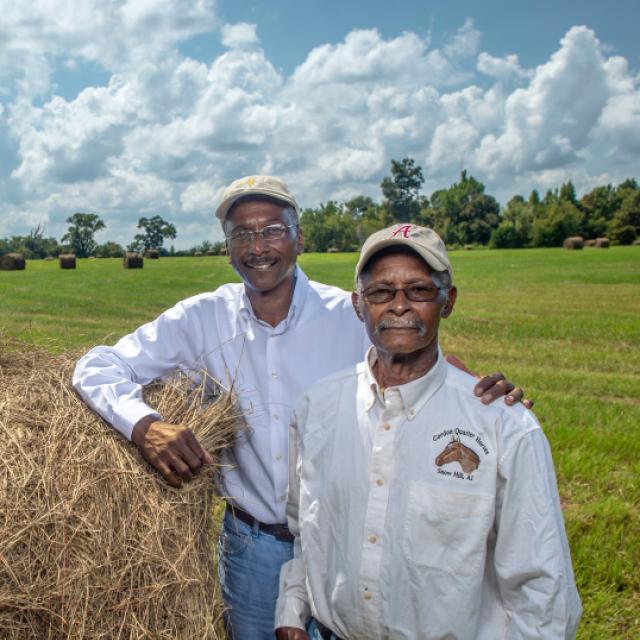
CIG is a competitive program that supports the development of new tools, approaches, practices, and technologies to further natural resource conservation on private lands. In PIA, CIGs are available in Hawaii, American Samoa, Guam and the Commonwealth of the Northern Mariana Islands.
Fiscal Year 2023 Pacific Island Area CIG Grant Proposals (Notice of Funding Opportunity)
Pacific Island Area (PIA) NRCS is announcing the availability of CIG funding to stimulate the development and adoption of innovative conservation approaches and technologies. Applications are accepted from eligible entities (Section C) for projects carried out in the Hawaii, American Samoa, Guam, and the Commonwealth of the Northern Mariana Islands (CNMI) A total of up to $500,000.00 is available for the PIA CIG competition in FY 2023. All eligible entities are invited to apply. A listing of eligible entities can be found in the Notice of Funding Opportunity on Grants.gov. Projects may be between one and three years in duration. The maximum award amount for a single award in FY 2023 is $150,000.00. The grant proposal submission deadline is June 5, 2023.
PIA CIG 2023 Notice of Funding Opportunity (515.59 KB)
A webinar presentation for CIG applicants was held May 4, 2023 via Microsoft Teams. Please view presentation slides and recording files for more information:
2023 PIA CIG Priorities
NRCS invites proposals that support one or more of the following PIA priorities. See the full Announcement of Program Funding for additional information about each of the priorities.
- Soil Health/Soil Quality
- Urban and Small Farms
- Climate Smart Ag and Forestry
- Wildlife Habitat
- Invasive Species
Application Process
The complete 2023 PIA CIG Request for Applications is posted on Grants.gov, opportunity number USDA-NRCS-HI-CIG-23-NOFO0001293. The opportunity can be found easily on Grants.gov through the basic search criteria by using the opportunity number, or by searching the CFDA of 10.912. It can also be found by filtering for All Department of Agriculture.
Applications must be submitted electronically through grants.gov. Incomplete and/or non-compliant proposals will be eliminated from competition, and notification of elimination will be sent to the applicant.
Submissions must be received by the time and date due. Late submissions will not be reviewed or considered. The agency will rely on system generated date and time receipt documentation for submission made via Grants.gov to determine whether applications met the submission deadline.
For More Information
Dan Curtis
Grants Management Specialist
Farm Production and Conservation Business Center
Email: Daniel.Curtis@usda.gov with a copy to FPAC.BC.GAD@USDA.GOV
Contact
Alan Saltzman
Acting Assistant Director for Programs
Phone: (808) 339-9057
Email: Alan.Saltzman@usda.gov
Additional Information
Webinars
NRCS has established a webinar series to allow employees, partner conservationists and other interested stakeholders to hear directly from CIG grantees.
Fact Sheet
General information about the CIG program, who is eligible and how to apply.
Support for Historically Underserved Producers
CIG provides special consideration and benefits to Historically Underserved applicants and projects that support Historically Underserved producers.
Congressional Report
The 2021 Congressional report briefly describes the history of CIG and how the program is managed.
Ready to get started?
Contact your local service center to start your application.
How to Get Assistance
Do you farm or ranch and want to make improvements to the land that you own or lease?
Natural Resources Conservation Service offers technical and financial assistance to help farmers, ranchers and forest landowners.

To get started with NRCS, we recommend you stop by your local NRCS field office. We’ll discuss your vision for your land.
NRCS provides landowners with free technical assistance, or advice, for their land. Common technical assistance includes: resource assessment, practice design and resource monitoring. Your conservation planner will help you determine if financial assistance is right for you.
We’ll walk you through the application process. To get started on applying for financial assistance, we’ll work with you:
- To fill out an AD 1026, which ensures a conservation plan is in place before lands with highly erodible soils are farmed. It also ensures that identified wetland areas are protected.
- To meet other eligibility certifications.
Once complete, we’ll work with you on the application, or CPA 1200.
Applications for most programs are accepted on a continuous basis, but they’re considered for funding in different ranking periods. Be sure to ask your local NRCS district conservationist about the deadline for the ranking period to ensure you turn in your application in time.
As part of the application process, we’ll check to see if you are eligible. To do this, you’ll need to bring:
- An official tax ID (Social Security number or an employer ID)
- A property deed or lease agreement to show you have control of the property; and
- A farm number.
If you don’t have a farm number, you can get one from USDA’s Farm Service Agency. Typically, the local FSA office is located in the same building as the local NRCS office. You only need a farm number if you’re interested in financial assistance.
NRCS will take a look at the applications and rank them according to local resource concerns, the amount of conservation benefits the work will provide and the needs of applicants. View Application Ranking Dates by State.
If you’re selected, you can choose whether to sign the contract for the work to be done.
Once you sign the contract, you’ll be provided standards and specifications for completing the practice or practices, and then you will have a specified amount of time to implement. Once the work is implemented and inspected, you’ll be paid the rate of compensation for the work if it meets NRCS standards and specifications.

